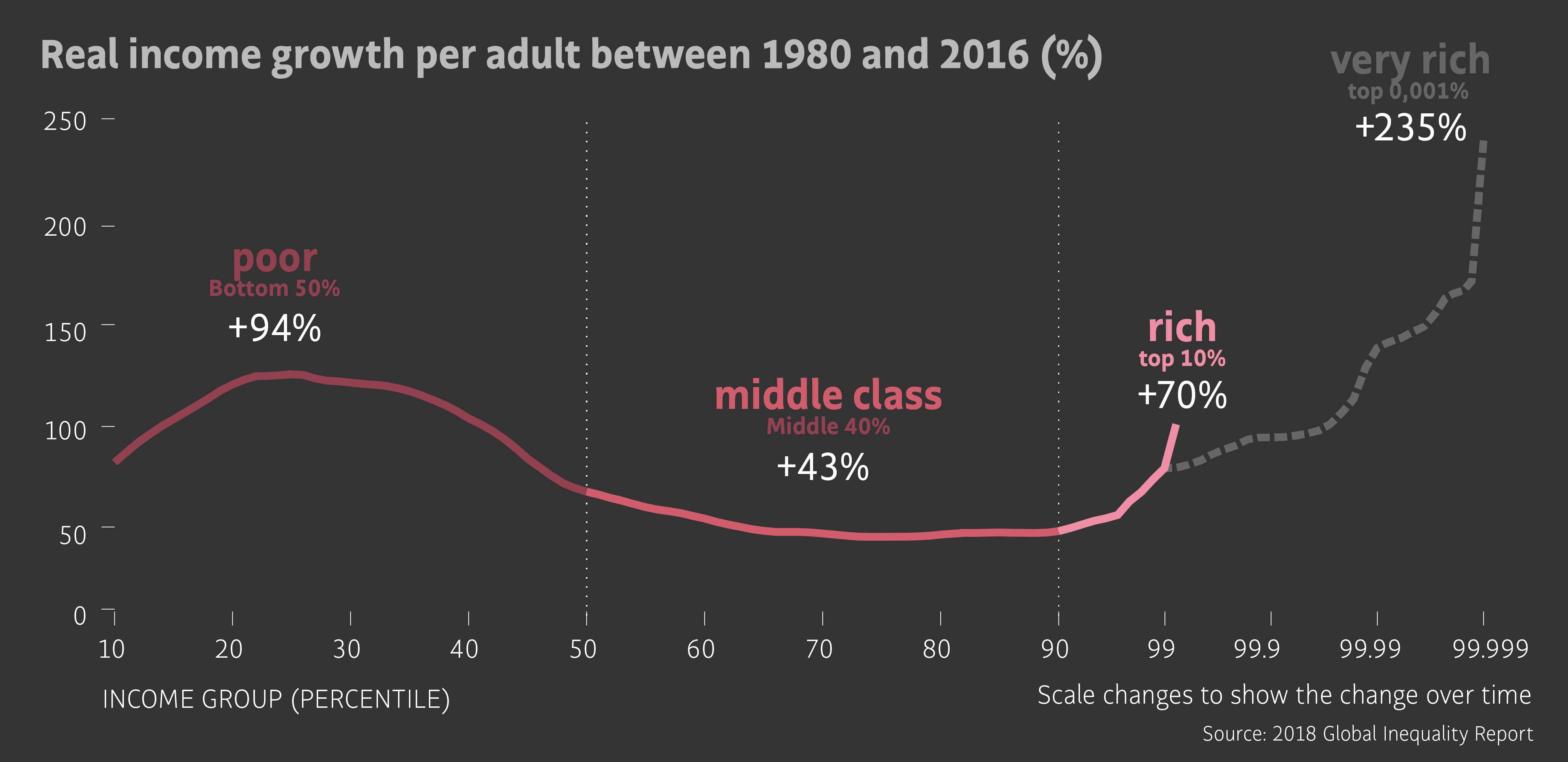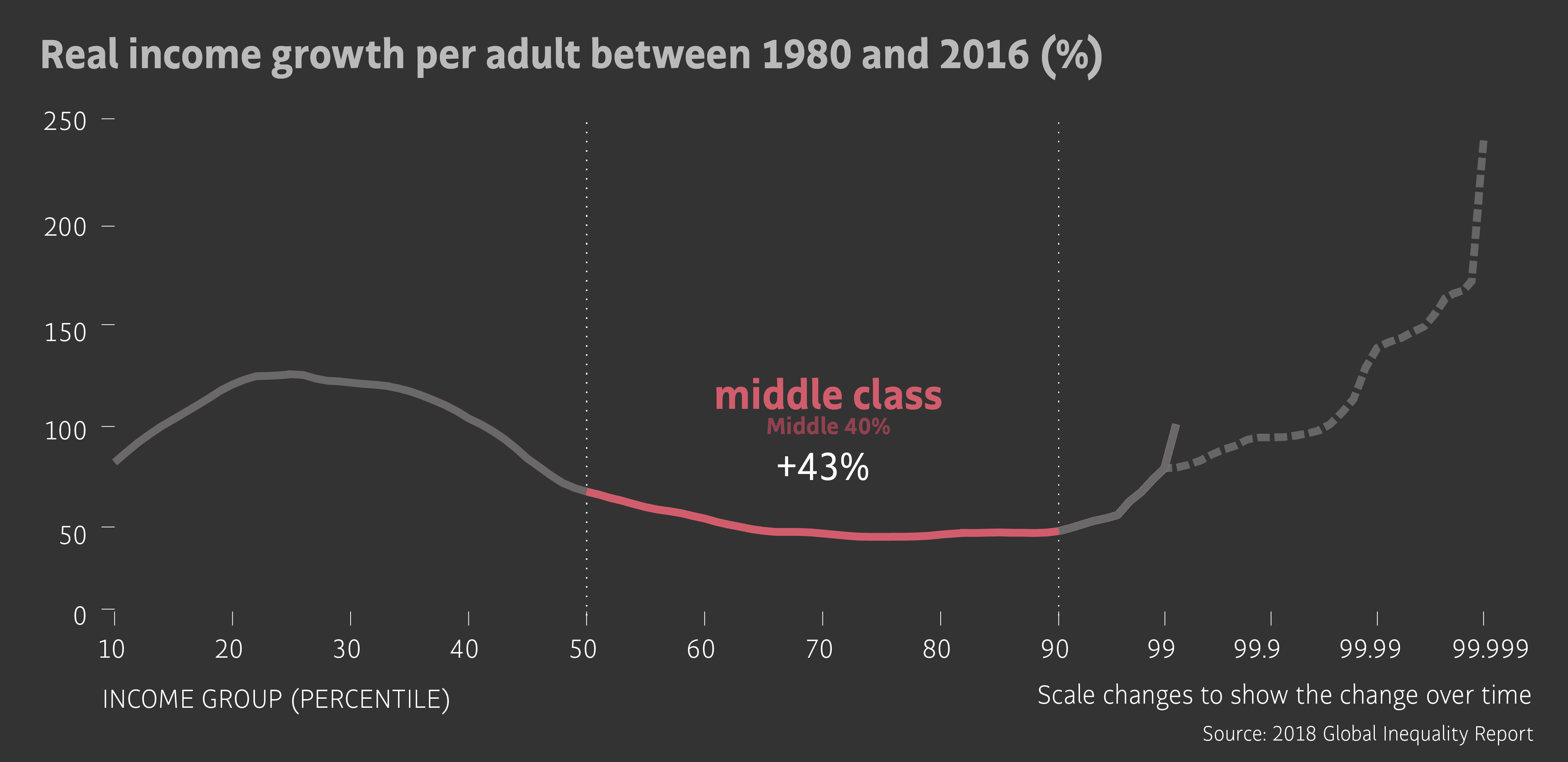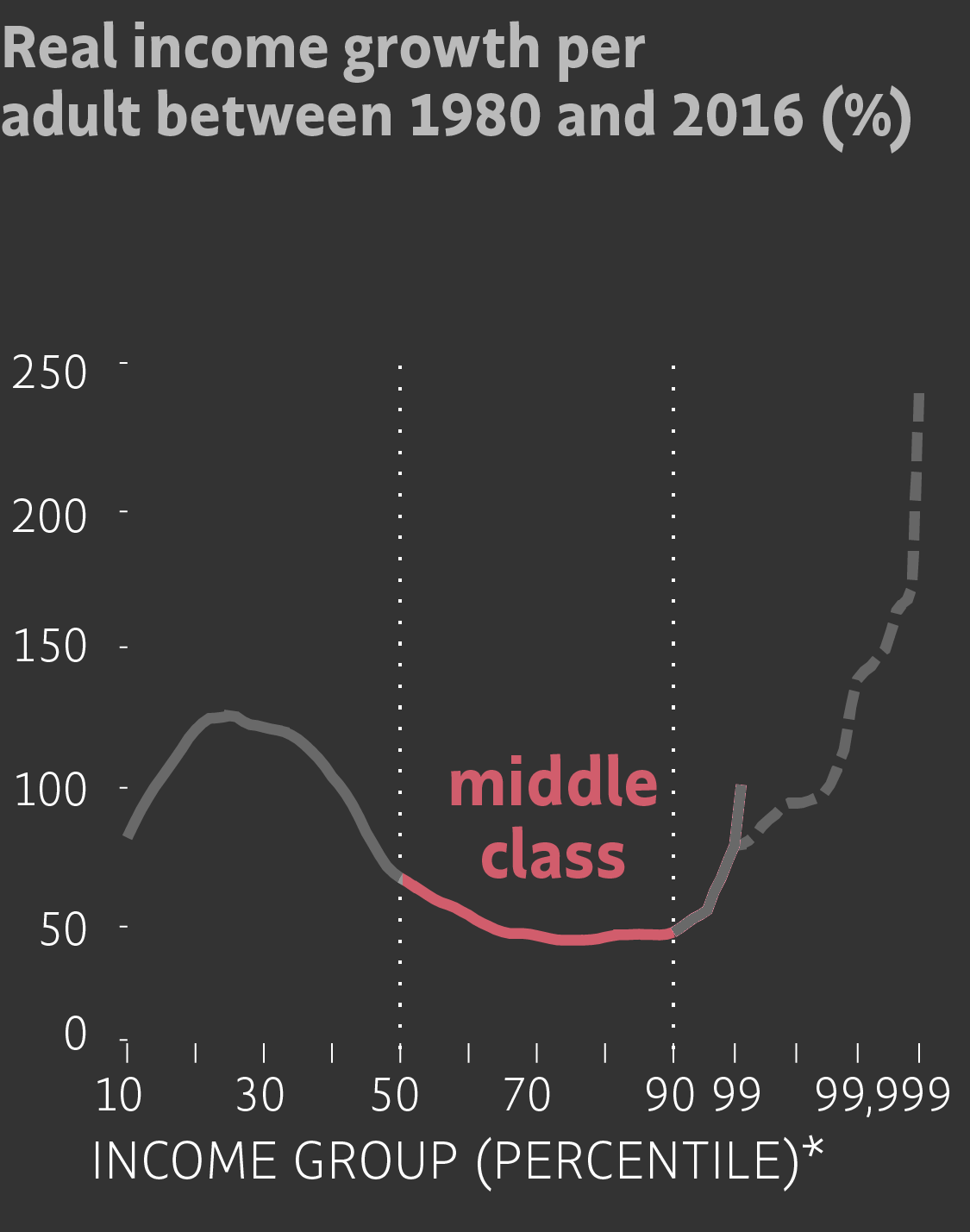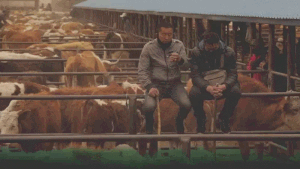The last 40 years have been great to poverty reduction across the world. More people on the globe have exited poverty and gained access to goods and food than in any historical period
However, while millions are leaving misery, especially in Asia, the rich are becoming richer
The middle class, the 40% in the "the middle", is more and more being squeezed between the bottom 50% and the top 10% -the rich
In a reaction to their lost status, especially in the West, where 85 percent of the high-income population is concentrated, the middle class is beginning to elect leaders who promise to bring back the past with radical discourse and simple solutions
This is reflected in governments that came to power or were reelected in countries like USA, Russia, Italy, India, Poland, Philippines, Brazil, Turkey, and Hungary
France, Germany, Spain, and Switzerland are also seeing leaders of this type increase. The United Kingdom voted to exit the European Union, and the right-wing is advancing in the European Parliament
Other symptoms of the precarity of the middle class include hostility to immigration, commercial disputes, and doubts about the usefulness of multilateral organizations
As the income of poor countries inches closer to that of rich countries and internal inequality increases, the world is returning to an economy configuration similar to the end of the 19th century, when nationalism and populism led to the conflicts in the 20th century
Without any multilateral solutions for inequality on the horizon, experts think global inequality will only increase as liberal democracies remain in check
Global inequality
As misery subsides in Asia and incomes concentrate at the top in almost every country, the middle class is being squeezed in the West, pushing them to resort to populist leaders who promise to bring back the good old days
Global inequality













